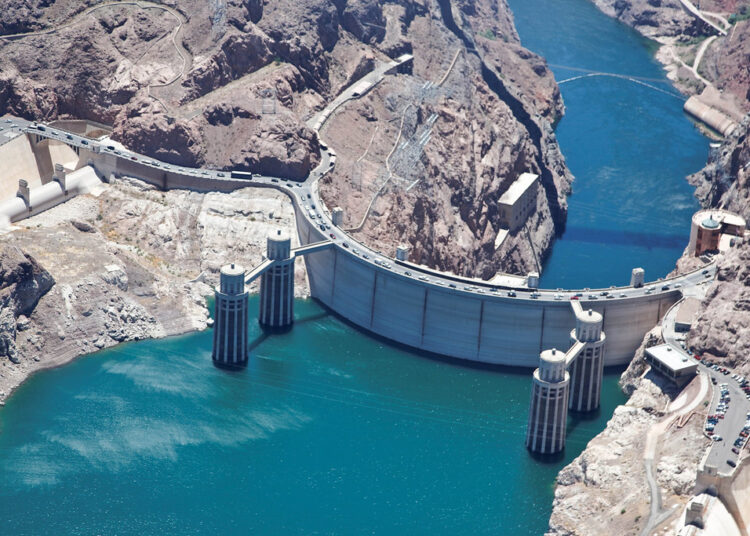Las Vegas has become a huge metropolitan area of almost two and a half million. Despite being located in the desert, it keeps on growing. This is occurring all over the Southwest region as well, and anyone who has visited recently is taken back by the number of housing developments that are springing up all over as people relocate from California, and other states both near and far.
Development in the desert became a reality with the construction of Hoover Dam in 1935. Lake Mead was created when the Hoover Dam was completed. Along with Lake Powell, they are the two largest reservoirs in the nation. Mead supplies water and power to Arizona, California, New Mexico and Mexico. Now, thanks to climate change and extensive drought, those lakes are running dry and the Southwest may be in trouble.
Lake Powell, the nation’s second-largest of the two, and one that provides water and power to millions of people in southern California as well as Nevada, has reached its lowest levels since its first filling in the 1960s. Its companion reservoir, Lake Mead, is at levels almost as low.
Together, these reservoirs, fed by the Colorado River—once mighty but now sadly depleted– provide the water 40 million Americans depend on. Despite the storms that brought heavy rain and snow to California and other Western states in January, experts say it would take years of such weather to replenish the West’s water resources.

“In the year 2000, the two reservoirs were 95% full. They’re roughly 25% full now,” said Brad Udall, a water and climate scientist at Colorado State University. “It’s hard to overstate how important the Colorado River is to the entire American southwest.”
Lake Mead is the source for 90% of the water supply to Las Vegas, 50% to Phoenix, effectively 100% to Tucson and 25% to Los Angeles,” said Udall. If Lake Mead were to reach dead pool, it would technically still be able to supply drinking water to Las Vegas, but there would be none for agriculture. This would affect not only those regions, but would have a trickle down effect throughout the country.
The biggest worry is that if the lake’s level falls much lower, it won’t be possible to get water out of it. Tubes that run water through, out of the lake and into eight hydroelectric turbines, could soon be above the water. There are bypass tubes available below that point, but they weren’t designed for continuous use, so it’s not clear how they would fare.
“If you can’t get water out of the dam, it means everyone downstream doesn’t get water,” said Udall. “That includes agriculture, cities like Los Angeles, San Diego and Phoenix.”
The “doomsday scenario” is that water will stop flowing altogether, said Bill Hasencamp, Colorado River resources manager for the Metropolitan Water District of Southern California. But before things get to that point the Department of the Interior will require reductions in use. The magnitude of the reduction would determine the impact it would have on people’s daily lives and agriculture.
If the lake falls another 32 feet – about the amount it fell in just the past year – power generation concerns become more urgent, Udall said. Snowmelt this spring is forecast to bring levels up somewhat but it would take years of heavy snow to add water to the current levels.
Yet despite what might be radical changes, the predictions are not entirely dire: “The West might look different,” said Hasencamp. “You might not see the lush lawns of today and endless fields of alfalfa, but you will see thriving communities and agricultural regions.”












